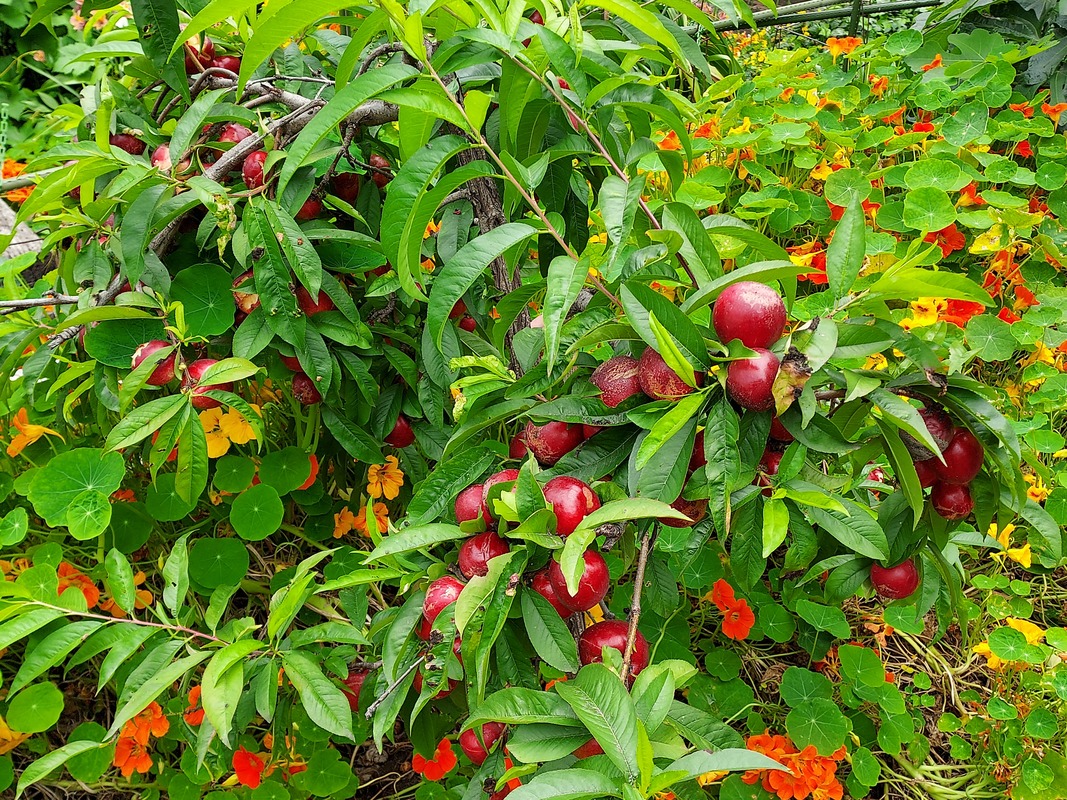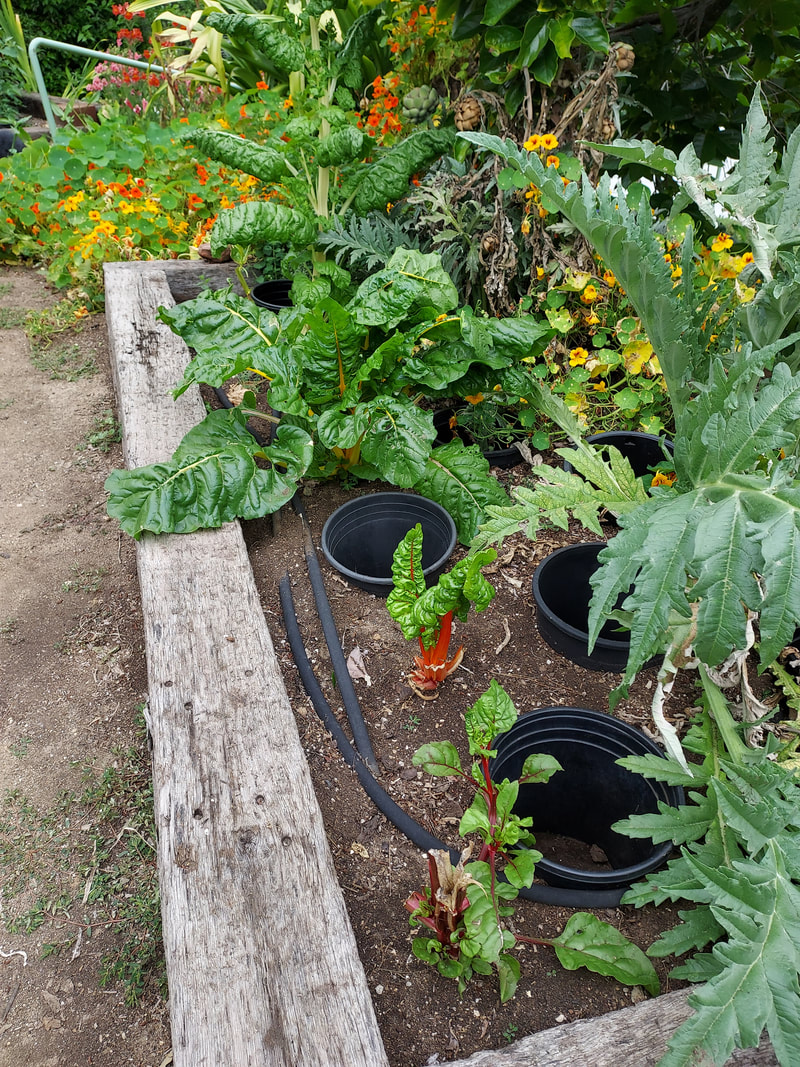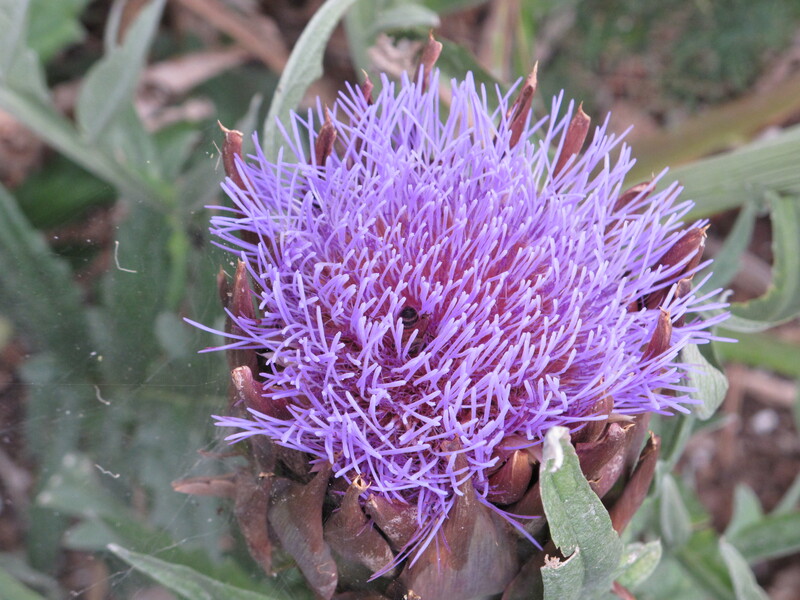| Brugmansia in 3 colors. Left = Artichokes ready to be harvested. Right = beautiful blossom. Center = seed head ready to harvest. Seeds are at the base of the "hair". | While every gardening year is strange contrasted to previous years – with always something weird along with the general sameness from year to year – this year’s peculiarity so far has been two-fold: 40+ inches of rain here in Pasadena, and what seems to be neverending May Gray and June Gloom. During the half-dozen years of severe drought, with the average rain merely a single-digit percentage of our “regular” dozen inches, I’d gotten used to a May week of 100+ temperatures and therefore not planting a second group of tomatoes because they just didn’t survive the intensity of the rest of the summer. This year, with the continuing mild temperatures in the 70s during the days and high 50s at night, I’ve made several resowings of cool-season vegetables like chard and parsley and cilantro and kohlrabi and carrots along with the summer-lovers of squash and cucumbers. But I have yet to water the entire garden beyond spot-filling fruit tree berms, veggie beds, and of course the tomatoes. The mildness has also enabled us to thoroughly enjoy the bloomers long beyond their regular tenure. My nasturtium ocean is still looking lush and floriferous, alstroemerias are blooming out all over, and other perennials like gaura and brunfelsia are filling out and coloring up, as are roses and statice. Even the nasturtiums that we pulled from the pathways and placed as mulch along the fruit tree rows is still perky. Many of the earlier-Spring bloomers are concentrating on maturing their seed pods. As foliage takes its time enabling the roots to reabsorb its energy for next year’s seed strength, we gardeners must appreciate the dying-back browns to the absolutely crispy-crunchy maturity stage when we can finally harvest them. This means having a lot of dead stuff around, sometimes up to 6 or 8 weeks depending on the particular plant. And this year, with the continuing mild temperatures and not much bright sun, it may take longer for the seed pods to achieve their full mature dryness. The clue to the necessary absolute crispyness is whether the stem of the seedpod literally shatters as you bend it. If it wiggles every so slightly, it’s not dry enough – so let it sit for another week at least! I find it helpful to tie a paper bag around the seedhead to catch the seed as it falls. Also, holding a bucket under the seedhead as you harvest it, especially with breadseed poppies, will help you catch more of the seed from the “saltshaker” pods. For garden tasks, see June. For other major-topic blogs for this time of year, see Homepage. |
|
0 Comments
Leave a Reply. |
Categories |





























 RSS Feed
RSS Feed